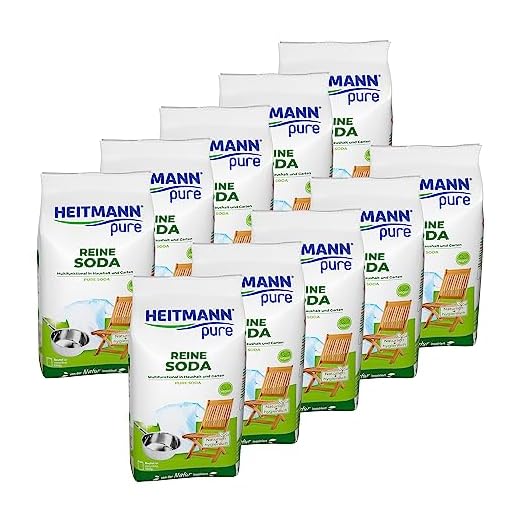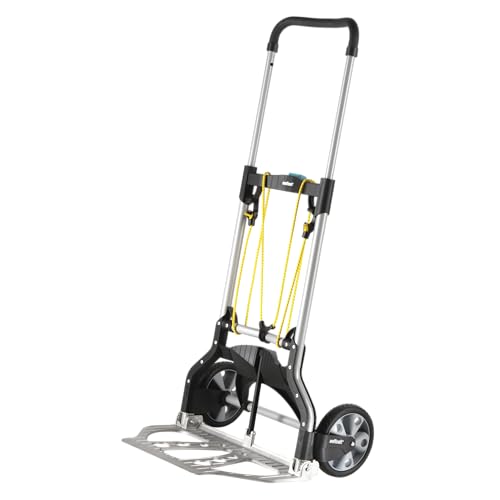



Start with an initial rinsing using low pressure to remove loose dirt and debris from your outdoor surfaces before applying any cleaning agents. This simple first step ensures that you don’t simply push dirt around, allowing for a more thorough treatment.
Next, select the appropriate detergent that suits the specific type of material you are dealing with. For instance, a pH-neutral cleaner works effectively on porous stones, while a stronger solution may be necessary for tougher stains. Always refer to the manufacturer’s guidelines on suitable cleaning products to avoid damage.
After applying your chosen solution, allow it to dwell for the recommended time, which typically ranges from 5 to 15 minutes. This waiting period is crucial as it enables the cleaning agent to penetrate and break down grime. Use a soft bristle brush to agitate the surface gently, ensuring you cover all affected areas. Rinse thoroughly with high pressure for optimal results, ensuring that no residues remain.
Finally, consider using a surface cleaner attachment for even coverage across large areas. This tool will not only aid in maintaining consistent pressure but will also minimise the risk of striping the surface. Regular maintenance reduces future buildup and prolongs the life of your outdoor surfaces.
Technique for Restoring Natural Surfaces with Electric Cleaning Equipment
Begin with selecting the right accessory; a rotary or flat surface cleaner attachment greatly enhances the effectiveness. These attachments ensure even distribution of water, preventing streaks and damage.
Set pressure settings appropriately. For delicate materials, a lower pressure, around 130-150 bar, protects the texture while still ensuring dirt removal. Adjustments can be made based on the condition of the surface.
Maintain distance. Keeping the nozzle at least 30 cm away allows for a controlled approach. This prevents eroding the surface while ensuring thorough cleansing. Always angle the nozzle to avoid direct hits which can displace material.
Apply a suitable detergent designed for natural surfaces. Use the detergent tank if available, or spray before applying high-pressure. Allow it to sit for 5-10 minutes to maximise efficacy, then rinse thoroughly.
Rinse from the top down in sections. This prevents dirty water from running back onto already cleaned areas. Ensure to overlap slightly with each pass to maintain consistency in the finish.
After the process, inspect for any residual spots. A second pass may be necessary for stubborn areas that require extra attention, using a lower pressure to prevent damage.
For ongoing maintenance, consider using a sealing treatment post-cleaning to enhance longevity and resistance against future staining and algae growth.
Choosing the Right Nozzle for Stone Cleaning
Select a high-pressure lance specifically designed for hard surfaces, often featuring a turbo nozzle. This attachment rotates the spray, enhancing the efficiency of debris removal. The adjustable nozzle is another excellent choice for various tasks, allowing you to switch between wide and narrow patterns based on the level of grime.
For delicate areas or intricate designs, employ a fan nozzle with a lower pressure setting. This will help maintain the integrity of details while still offering effective results. It’s crucial to test the nozzle on a small, inconspicuous area first to assess how the material responds.
Consider the spray angle as well; a 25-degree nozzle typically provides a good balance for most applications, while a 15-degree option concentrates power on stubborn stains. For outdoor surfaces, a surface cleaner attachment can be invaluable, ensuring even coverage without causing damage.
Always keep the nozzle at a safe distance from the surface, ideally starting at about 30 cm and adjusting as needed. The right combination of nozzle type and spray distance will maximise cleaning while minimising potential harm to the surface.
Preparing the Area for Pressure Washing
Remove any outdoor furniture, planters, or decorative items from the vicinity. Ensure the surface is clear to avoid damage and to enhance access.
Protect Plants and Surfaces
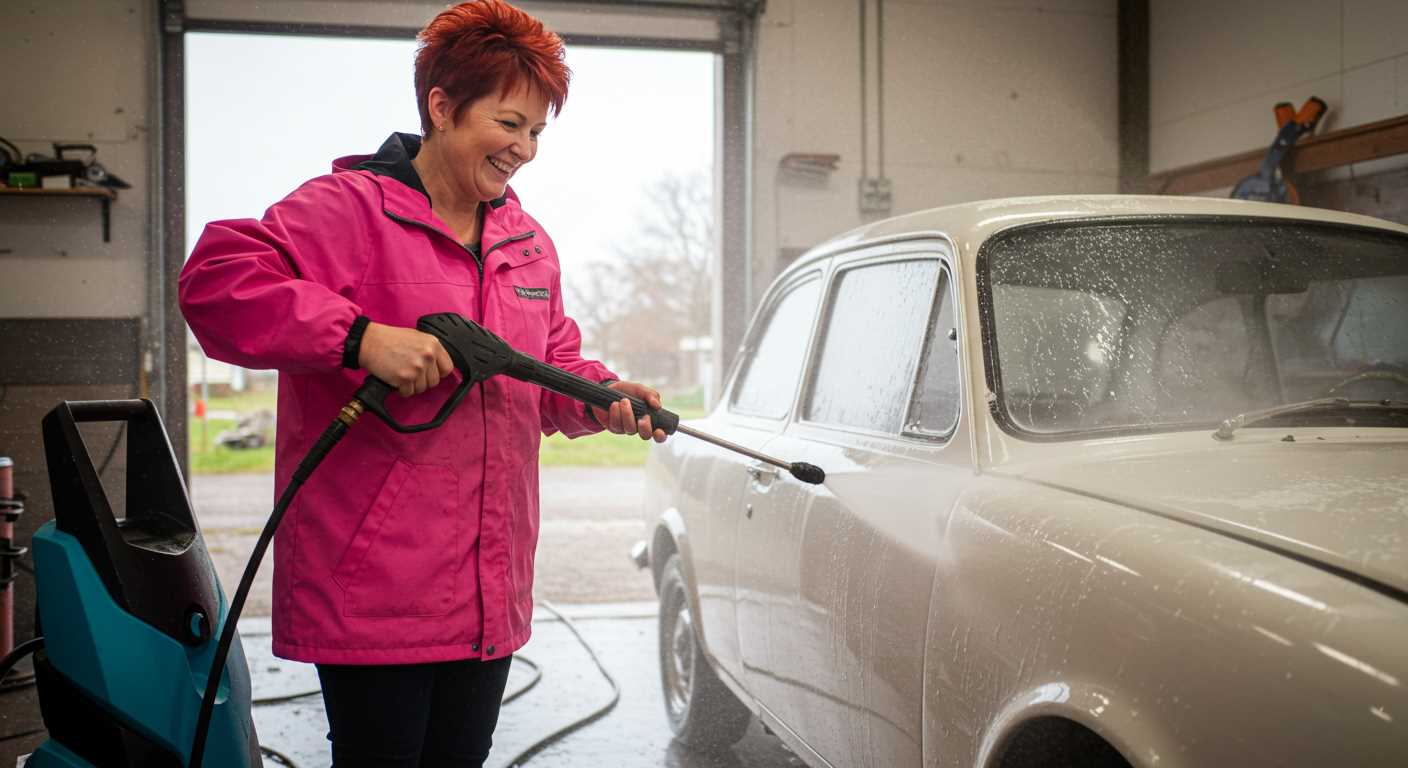
Cover plants and delicate surfaces with tarps or plastic sheets. Use cardboard to shield nearby walls or windows. This prevents overspray from affecting areas you wish to keep untouched.
Clear the Drains
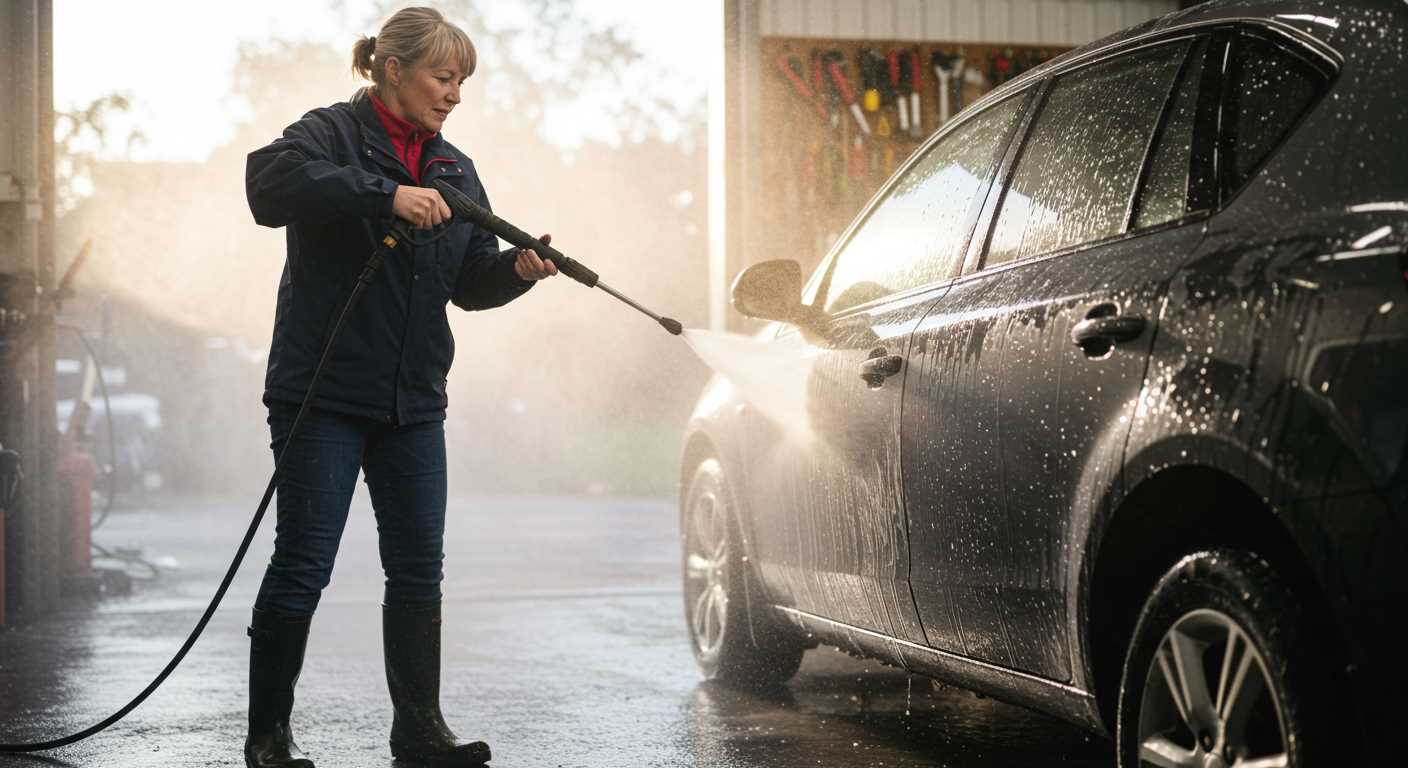
Check drainage systems. Ensure leaves, dirt, or debris are removed to allow proper water flow. This avoids potential flooding or backup during your session.
- Inspect nearby areas for tools or equipment that could interfere.
- Check for power sources if any attachment requires electricity.
- Ensure the ground is stable; avoid working on soft or uneven surfaces.
By following these steps, you’ll set up a safe and effective environment for your cleaning task, leading to optimal results.
Mixing Cleaning Solutions for Stone Surfaces
For optimal results, I recommend combining specific cleaning agents tailored for various surface types. Start with a pH-neutral detergent, which effectively removes grime without causing damage. Dilute this in warm water–typically, a ratio of 1 part detergent to 10 parts water works well.
If dealing with stubborn stains, consider adding a small amount of white vinegar. This natural acid can break down tough residues. Use sparingly; roughly a quarter of a cup in a gallon of your detergent solution is sufficient.
For mildew or mould, a solution of one part bleach to ten parts water can be effective. Always wear gloves and a mask while handling bleach, as the fumes can be harmful.
To ensure a safe mix, follow these guidelines:
- Always read product labels for compatibility.
- Test any solution on a small, inconspicuous area first.
- Avoid mixing different chemical cleaners as this can lead to dangerous reactions.
After mixing, before application, agitate the solution gently to distribute the ingredients evenly. This preparation not only enhances performance but also ensures you achieve the desired cleanliness without damages.
When ready to use, apply the solution via a suitable method, allowing it to sit for 5-10 minutes to activate before rinsing thoroughly. This process maximises the effectiveness of your chosen cleaning solution while maintaining the integrity of the surface.
Proper Technique for Operating the Pressure Washer
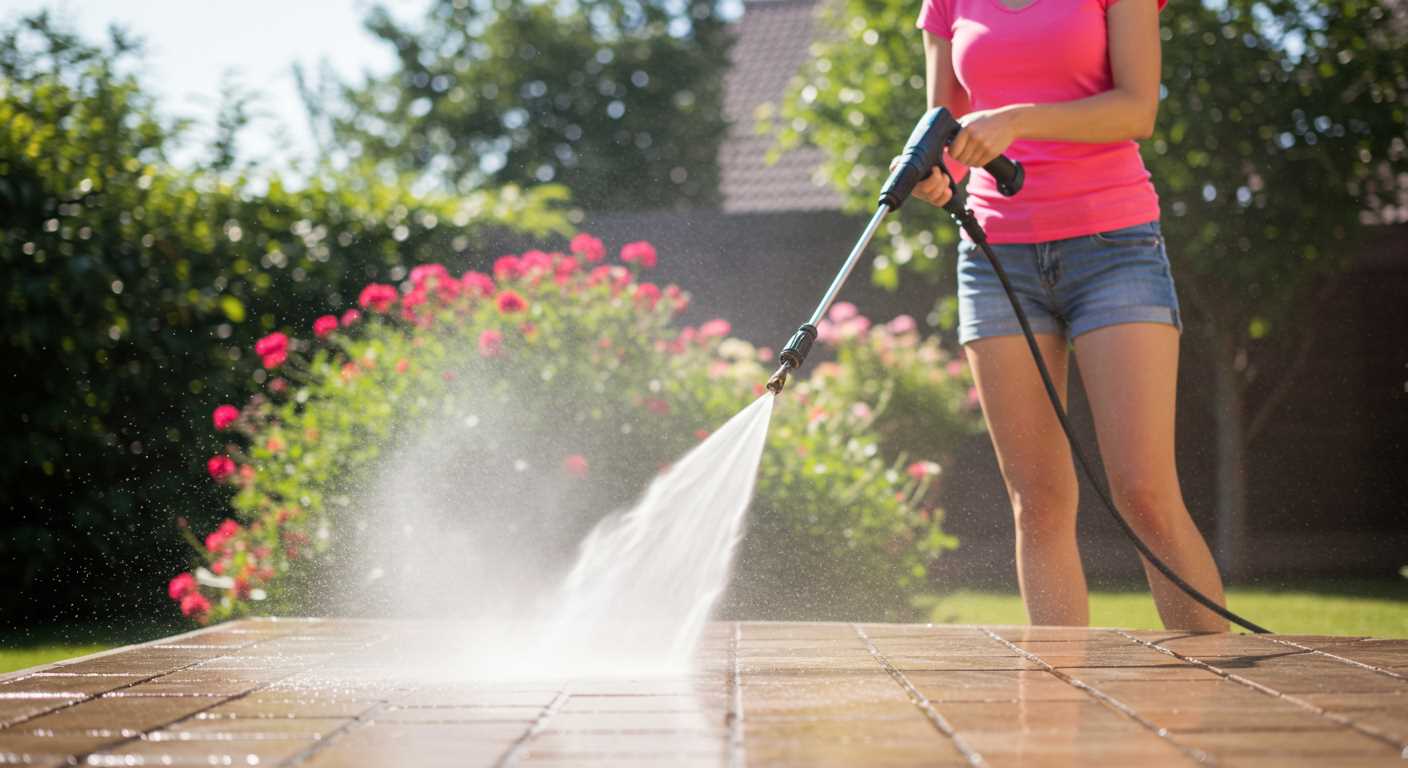
Maintain a steady grip on the handle while keeping your feet shoulder-width apart for stability. Position yourself at an angle of approximately 45 degrees to the surface; this approach optimises the force distribution and reduces the risk of damage. Begin at the top of the area and work your way down to ensure that debris is pushed downwards and away from previously cleaned sections.
Utilise a sweeping motion rather than a constant stream on one spot. This technique prevents etching or gouging of the surface material. Keep the nozzle at least 12 inches away from the surface to avoid excessive force that could lead to unwanted damage.
Adjust the distance as needed based on the level of dirt or grime encountered. For stubborn spots, a slight reduction in distance may be necessary, but always return to the initial distance after treating the area to avoid wear.
Frequent pauses to inspect the progress are beneficial. This allows adjustments in technique or cleaning solution concentration if required. Ensure the nozzle is moving consistently to prevent concentrated pressure from causing issues.
After completing a section, take the time to examine the results before moving on. This step ensures a thorough job while minimising the need for subsequent touch-ups. Never rush the process; a methodical approach yields the best outcomes.
Safety Precautions to Take While Cleaning
Always wear protective goggles to shield your eyes from debris and chemical splashes. Heavy-duty gloves are a must to protect your hands from harsh cleaning agents. Consider rubber boots to prevent slips and protect your feet from falling objects.
Ensure the area is clear of obstacles, including pets and children, to avoid accidents. It’s wise to block off the work zone using barriers or cones.
Before starting, inspect the equipment for any leaks or damages. A damaged hose can cause injury, so make sure all connections are secure. Maintain a safe distance, keeping the nozzle at least 30 cm from the surface to minimise the risk of injury.
Always check the weather forecast; avoid working in strong winds, rain, or extreme temperatures. Wet surfaces can be slippery and make it hard to control the machine.
Use only the recommended cleaning solutions, as improper mixing can create hazardous fumes or damage surfaces. Read labels carefully and follow instructions closely.
Never point the nozzle at yourself, others, or any electrical devices. If you need to switch nozzles or change settings, turn off the equipment first to avoid accidental activation.
Stay alert and focused on the task. Operating any cleaning device requires full attention to ensure safety and effectiveness. Take breaks if you feel fatigued.
Post-Cleaning Care for Stone Surfaces
After completing the washing process, immediately rinse the surfaces with clean water to remove any remaining detergent residues. This step is crucial to prevent any potential discolouration or damage to the material.
Routine Maintenance Steps
Implement a regular maintenance schedule to prolong the appearance and durability of your surfaces. It’s recommended to follow these guidelines:
| Action | Frequency | Details |
|---|---|---|
| Inspect for stains | Monthly | Check for any new stains or debris. Address them immediately. |
| Rinse with water | Bi-weekly | Lightly spray with water to remove dust and dirt buildup. |
| Apply sealant | Annually | Use an appropriate sealant to protect against water and stains. |
Repairing Minor Damage
Should you notice minor cracks or surface imperfections, promptly address them using a suitable repair compound designed for these materials. Follow the manufacturer’s instructions for best results.
Lastly, consider using a soft-bristled broom or a leaf blower to remove leaves or debris as they can trap moisture and contribute to stains or algae growth. Consistent care maintains both aesthetics and integrity of your surfaces.


